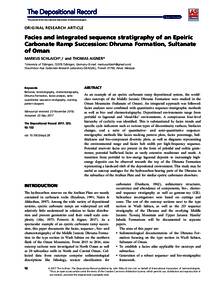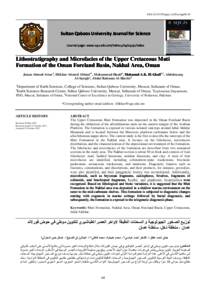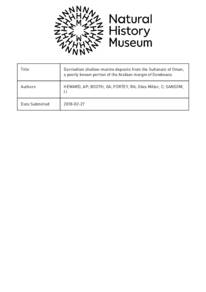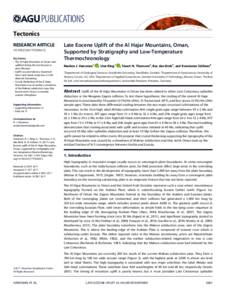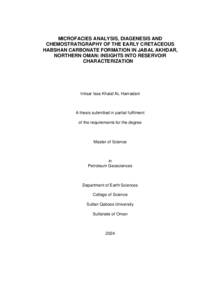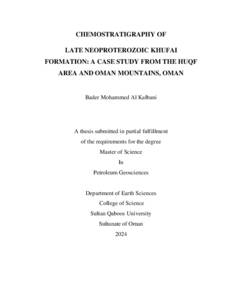وثيقة
Facies and integrated sequence stratigraphy of an epeiric carbonate ramp succession : dhruma formation, Sultanate of Oman.
المعرف
DOI: 10.1002/dep2.28
المصدر
Depositional Record. v. 3, 1, p. 92-132
المساهمون
Aigner, Thomas., مؤلف
الدولة
United States.
مكان النشر
New Jersey
الناشر
John Wiley and Sons Inc.
ميلادي
2017-06-01
اللغة
الأنجليزية
الموضوع
الملخص الإنجليزي
As an example of an epeiric carbonate ramp depositional system, the world-class outcrops of the Middle Jurassic Dhruma Formation were studied in the Oman Mountains (Sultanate of Oman). An integrated approach was followed: facies analyses were combined with quantitative sequence-stratigraphic methods as well as bio- and chemostratigraphy. Depositional environments range from peritidal to lagoonal and ‘shoal-like’ environments. A conspicuous four-level hierarchy of cyclicity was identified. This is substantiated by facies trends and specific cycle indicators such as various types of discontinuity surfaces, biofacies changes, and a suite of quantitative- and semi-quantitative sequence-stratigraphic methods like facies stacking pattern plots, facies percentage, bed-thickness and bio-component diversity plots, as well as diagrams representing the environmental range and facies belt width per high-frequency sequence. Potential reservoir facies are present in the form of peloidal and oolitic grainstones; potential baffle/seal facies as vastly extensive mudstones and marls. A transition from peritidal to low-energy lagoonal deposits to increasingly high-energy deposits can be observed towards the top of the Dhruma Formation representing a landward shift of the depositional environment. This study may be useful as outcrop analogue for the hydrocarbon-bearing parts of the Dhruma in the subsurface of the Arabian Plate and for similar epeiric carbonates elsewhere.
ISSN
2055-4877
قالب العنصر
مقالات الدوريات

